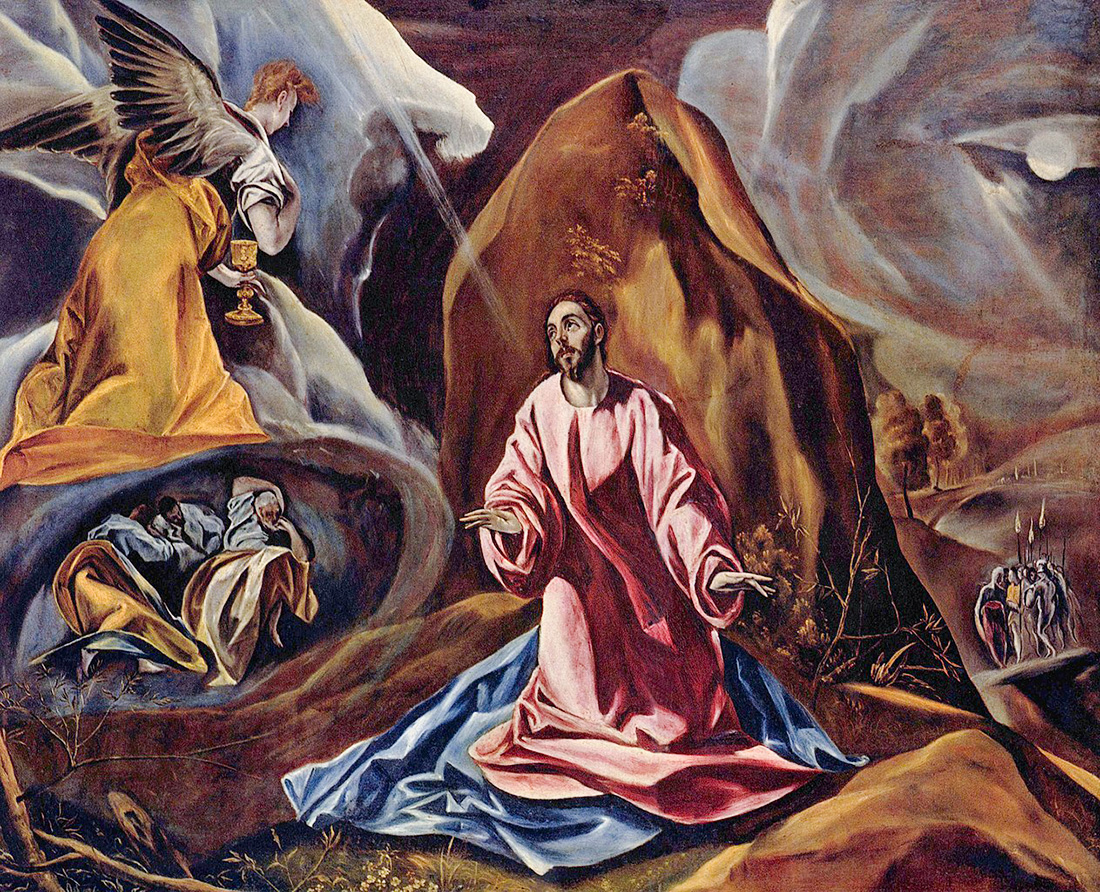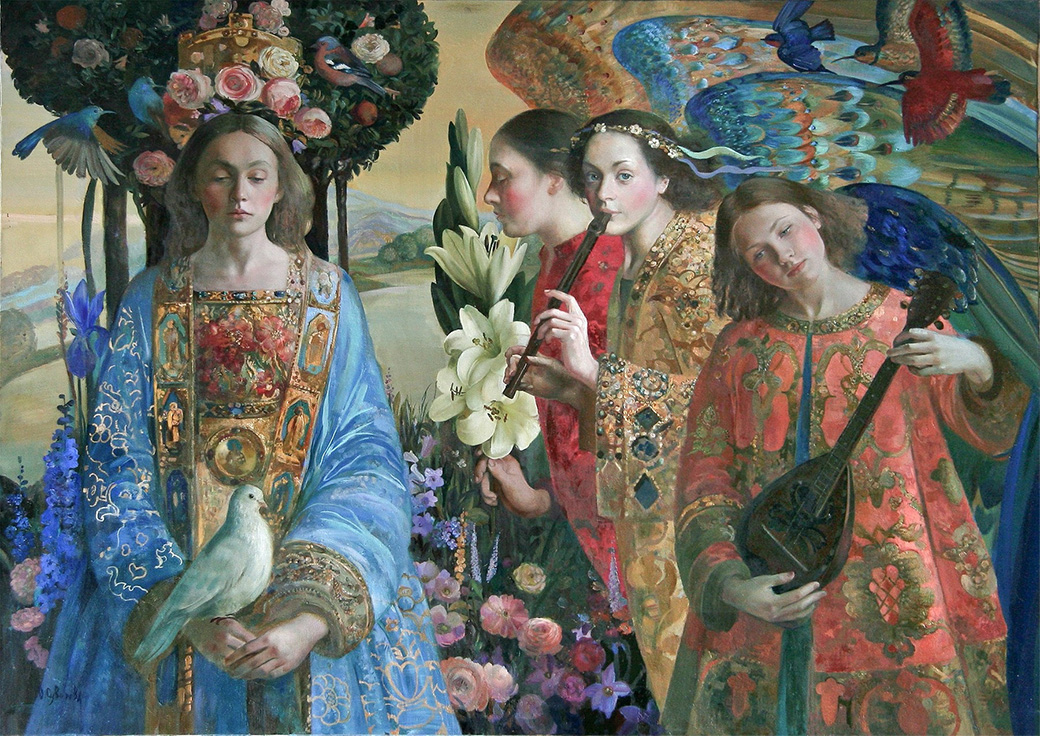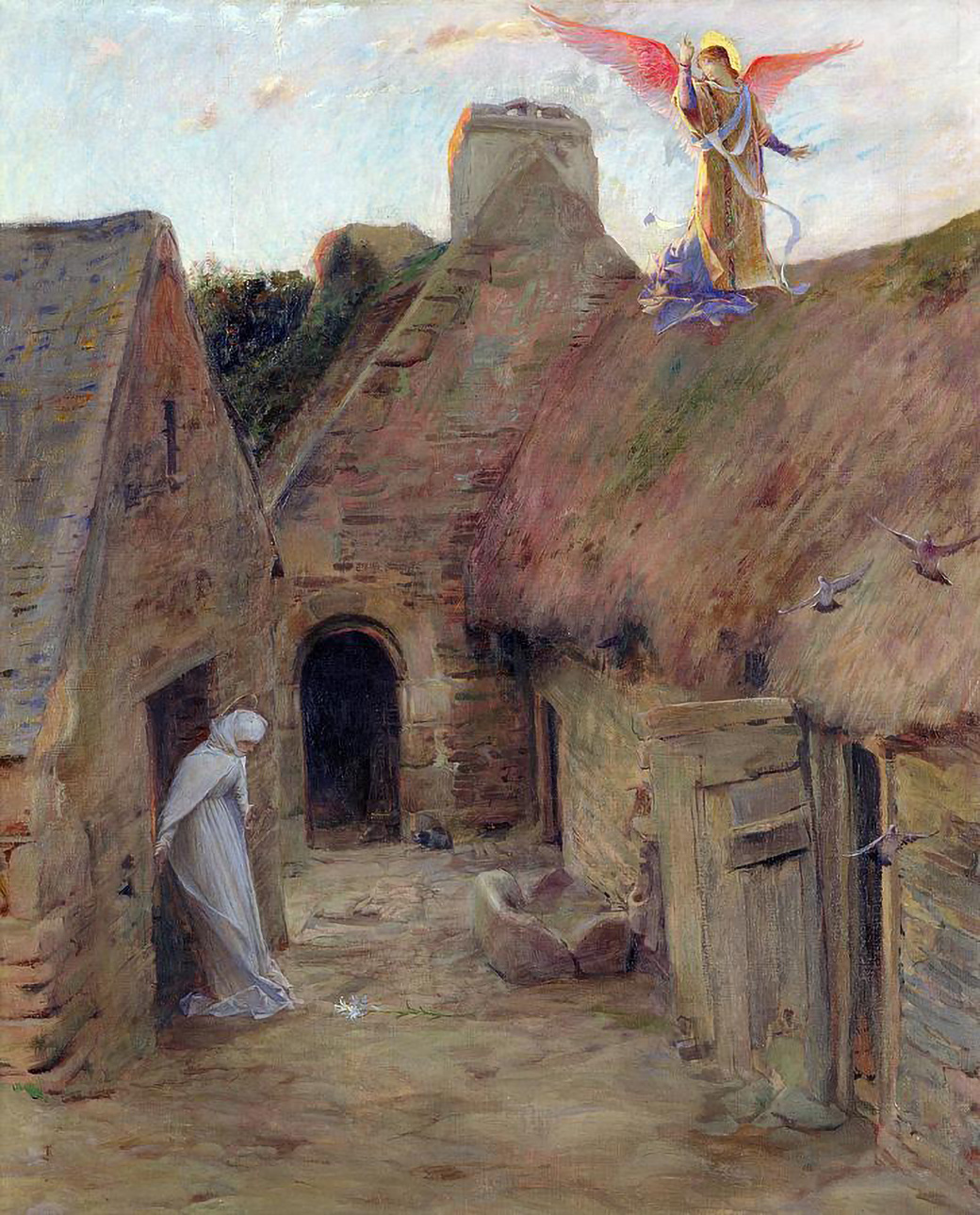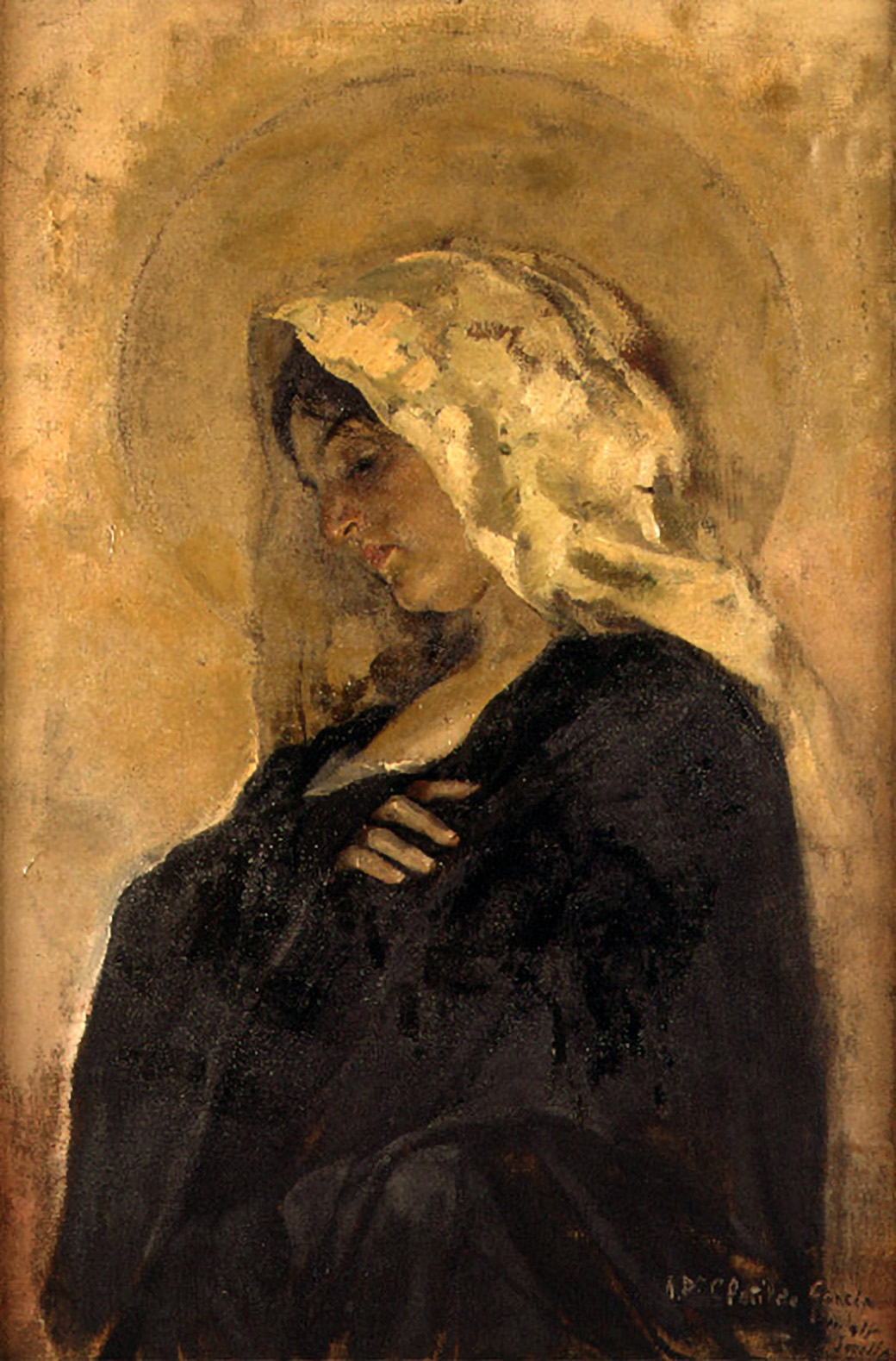Solemnity of the Annunciation: Isaiah 7:10-14; 8:10, Hebrews 10:4-10, Luke 1:26-38.
God has poured out His grace on us all, most especially Mary, on this holy day! Today we celebrate one of the greatest miracles, the Annunciation that God will dwell in humanity, and Mary’s resounding yet humble “yes.” Today’s readings display how God shared his plan 730 years earlier and also reveal the unique title bestowed on Mary from Heaven: Kecharitōmenē.
Isaiah’s reading is interesting because we hear that the Lord speaks to King Ahaz of Judah and tells him to ask for a great sign, “let it be deep as the nether world, or high as the sky!” What an offer! And yet King Ahaz refuses the Lord, citing the commandment not to test the Lord. With this, he displays a stunning lack of discernment about the law and the Lord. To follow God’s Word is not to test the Lord. Isaiah rightly upbraids him: “Is it not enough for you to weary people, must you also weary my God?” (This makes me chuckle; clearly, Isaiah is the one being wearied here.) So, God says He will give His own sign: “the virgin shall be with child, and bear a son, and shall name him Emmanuel.”
God’s promise to His people, 730 years before the event: this is how prophecy works. Our timeline is not the same as God’s. He decides when we might be ready to accept His gifts. And as we shall explore, one key to this great mystery is, in fact, acceptance.
St. Paul’s letter to the Hebrews gives us an idea of the type of acceptance that Mary, and in turn Jesus, gives to God. Conveying Jesus’s words, Paul writes, “a body you prepared for me; in holocausts and sin offerings you took no delight. Then I said, ‘As is written of me in the scroll, behold, I come to do your will, O God.’” Throughout the Old Testament we find references to the conversion of heart that God prefers to the ritual sacrifices and offerings; Jesus will emphatically proclaim this in his ministry while becoming the one sacrifice and offering to end them all. He also references Isaiah’s prophecy of His coming “as is written of me in the scroll.”

Not to strike an emotional off-note in this post, but for me His words “behold, I come to do your will, O God,” are heart-wrenching. This is because I know the shame, pain, and horror that awaits Jesus in his crucifixion, and we see Him accept it willingly, “like a lamb led to the slaughter.” I know that we should rejoice in His coming and how He offers everything that He is to the Father, but at the same time I have pity and empathy for my brother and Savior. Like Mary, I want to wrap my arms around Him and save Him from what awaits. What are we in comparison to Him? Shouldn’t we all want to take His place, to save Him from this burden? Are we too wrapped up in our small problems and desire to have our crosses lifted that we miss the chance to save Him from His Cross? I know that this is not possible, that his coming and sacrifice for our salvation is pre-ordained and that He is the most amazing heavenly gift of self from God, but something inside of me is stirred with compassion, and I don’t think that’s wrong. As we approach Holy Week, we must embrace this compassion for Christ in our hearts, for it is a part of God’s agape, it is why we commemorate his sacrifice every year and every Mass.
Enough! Let’s turn our attention to the gospel reading. We all know this story, it is our spiritual lineage. A virgin is betrothed to Joseph of the house of David. The Angel Gabriel “was sent from God” to her. And here is what he says:
Ancient Greek: χαῖρε, κεχαριτωμένη, ὁ κύριος μετὰ σοῦ.
“Greeklish”: Chaire, kecharitōmenē, ho kyrios meta sou!
English: Hail, “Full of Grace,” the Lord is with you!
I want to dwell on the actual Greek text here because it’s very important. The Angel Gabriel bestows on Mary a one-of-a-kind greeting, and “Full of Grace” doesn’t quite sum up the name he calls her, Kecharitōmenē. First, let’s get our pronunciation down (since we should all know how to speak her heavenly title): keh-kah-rih-toe-MEN-ee.¹ Notice that the root of his first two words is the same: χαῖρε (chaire) and χαριτω (charitō), which would have sounded a bit like heavenly wordplay coming from the Angel Gabriel, or at least a doubling or emphasis. “Kai-ray, keh-kah-rih-toe-MEN-ee,” he said. So what does this root word mean? χαριτω (charitō) means “grace”; χαῖρε (chaire) means “hail!” or “greetings!” and is clearly meant to be a happy greeting as the addition of -τε makes χαίρετε (chairete), which means “rejoice!”

However, κεχαριτωμένη (kecharitōmenē) is only used once in scripture and never in secular writings. That’s right, this one-of-a-kind word is invoked by the Angel Gabriel at that moment, used uniquely as a title for Mary. The common English translation is “full of grace,” which is fairly close, but does not express its true depth. In fact, “full of grace” is properly written as πληρης χαριτος (pleres charitos), which is used in reference to Christ in the prologue of the Gospel of St. John (Jn 1:14) and in reference to St. Stephen in the Acts of the Apostles (Acts 6:8).
But Kecharitōmenē is not an adjective. It is a noun, a title, and would be better translated as “The One Whom Grace Inhabits.” Thus, a better translation of the whole greeting would be: “Grace to you, The One Whom Grace Inhabits, The Lord is with you!”

Why does this matter? This unique title that the Lord bestows on Mary tells us about her role and special place in salvation history. Just like Abram is called Abraham (“Father of Nations”) and Simon is called Peter (“the Rock”), Mary is given a particular name and vocation. Before Mary is the Mother of God (Theotokos), before she is Mother of the Church (Mater ecclesiae), Mary is The One Whom Grace Inhabits (Kecharitōmenē). This name tells us that she is defined by the grace God gives her (by being chosen for her role) and the divine grace that will physically inhabit her womb. “Full of grace,” indeed!
Mary’s reaction is understandable: “she was greatly troubled at what was said and pondered what sort of greeting this might be.” Absolutely! She, a humble Jewish virgin teenager was not only approached by an angel, but that angel greeted her with enthusiastic respect and a unique title that had never been uttered before!

The Angel Gabriel reassures her and explains that she has “found favor with God.” He explains that she will conceive and bear a son she will name Jesus, not to mention this son will inherit “the throne of David,” he will “rule forever,” and his “Kingdom” will have no end. Mary’s first question: “How can this be, since I have no relations with a man?” (As if, hold that thought on the whole Messianic child thing … you said something about conceiving??)
And here we see the beautiful simplicity and purity of Mary, unperturbed at the majestic role the Lord has in store for her, but making sure that her purity was upheld. For most people, Gabriel’s answer would have probably led to just more questions: “The Holy Spirit will come upon you, and the power of the Most High will overshadow you,” but not Mary. She doesn’t press him further. Contrast this with King Ahaz’s refusal to ask God for a sign in the first reading from Isaiah. The Angel Gabriel then reveals that this conception by the Holy Spirit will make the child the “Son of God.”
We don’t ponder the next moment much, but consider that the fate of humanity hangs in the balance. Mary could choose to refuse this, knowing the problems a mystery pregnancy would cause her husband-to-be, her family, and her community. She could balk at the sheer greatness of expectation hanging on her to be the mother of the Messiah, of the Son of God. But her beautiful, sweet, humble answer is — in a nutshell — why she is so adored by the Church. In a sentence that itself can form the blueprint for all prayers, she responds, “Behold, I am the handmaid of the Lord. May it be done to me according to your word.”

And here we also see the glory of God who places his grace in the hearts of his people who must meet it with their free will. While His power is so undeniable and great, he chooses for it to be at the same time fragile. To enter into humanity first through the humble assent of a teenage girl and then the vulnerable form of an infant in a manger! He is always teaching us, caring for us as he enters into our human history. Could we have had a more gentle and humbling entrance for the Lord than the Virgin Mary conceiving a child not from her husband?
Finally, let us understand the importance of the Annunciation in the scope of salvation history. The scene of the Annunciation painted by the great Dominican Fra Angelico below displays the import of this event:

This is the third in a series of paintings that Fra Angelico made from 1430-1435, and the richest theologically. Unique to this version, we find the ray of light emanating from the hands of God, sending the Holy Spirit in the form of a dove; we see the archways decorated in vibrant dark blue with golden stars, the classic medieval way to represent the entire cosmos, under which Mary is seated as if on a throne; and we see Adam and Eve being expelled from the Garden of Eden. Our Catholic theology of Mary is highly developed. We understand that she is the Ark of the New Covenant, containing God in a new way just as the Ark of the Covenant built by Moses contained the stone tablets and the presence of God. We also understand that she is the New Eve, undoing the great original sin of disobeying God by obeying him via the Incarnation. This painting by Fra Angelico not only depicts the actual visitation of the Angel Gabriel but also the mystical aspects of the encounter such as the Holy Spirit coming upon her and the establishment of her role in salvation history as the New Eve.
Blessed are we that Kecharitōmenē was chosen by God for this great vocation! Blessed are we that she can be our spiritual mother, our intercessor with God to Whom she has joined in Heaven.
¹ Scholars note that Ancient Greek was pronounced differently than modern Greek, so while modern Greek speakers would pronounce χαῖρε (chaire) with a soft-ish “ch” sound at the beginning, ancient Greek speakers would pronounce this as a “kh” sound like our word “kite.” I’ve stuck with pronunciations as St. Luke and his readers would have said them.
Perhaps we can think of, ” Kecharitōmenē ” as the acceptance of God’s Grace as flesh. Just as the Word of God made flesh is Christ.
Pingback: Our New Eve - Mary is the perfection of humanity
Pingback: A House for the Lord to Dwell: Mary's womb.